Avebury stone circle
There are sacred rocks (iwakura) all over Japan, but I’ve never seen a date put on them. The supposition is that they date to the Yayoi Age (300 BC-300 AD), when waves of immigrants brought new gods and forms of worship. By contrast, the megaliths of Britain are much older, and the great circle of Avebury where I recently attended a seminar dates back to approximately 2600 BC.
Avebury is constructed on a massive scale, and compared to the contemporaneous Stonehenge it’s like a cathedral to a church. Both were erected in different stages, and Avebury’s final form featured a circular ditch with a massive diameter of 420 meters. Inside it is an outer stone circle of 98 (possibly 99) large sarsen stones, enclosing two smaller circles. In the middle once stood a large obelisk, 5.5 meters high.
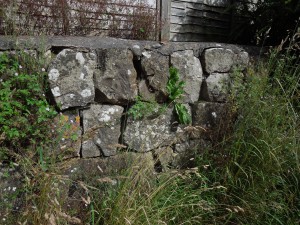
A wall containing standing stones from the Avebury circle, which was fellled, heated over fires and broken into building blocksroken into
In the fourteenth century, at the prompting of the Christian priest, villagers destroyed some of the large rocks to use in walls and housing. (The death of a surgeon when a rock fell on top of him persuaded the villagers that the devil was protecting the monument.) Markers now indicate where the fallen stones would once have stood.
In keeping with the demonisation of pagan ways, Christians came to refer to a chair-like ledge in one of the rocks as the Devil’s Seat. Our seminar leader, Peter Knight, thought it might have served in fact as seat for the shaman welcoming pilgrims who had travelled from outer parts for one of the great seasonal festivals that took place at the stone circle.
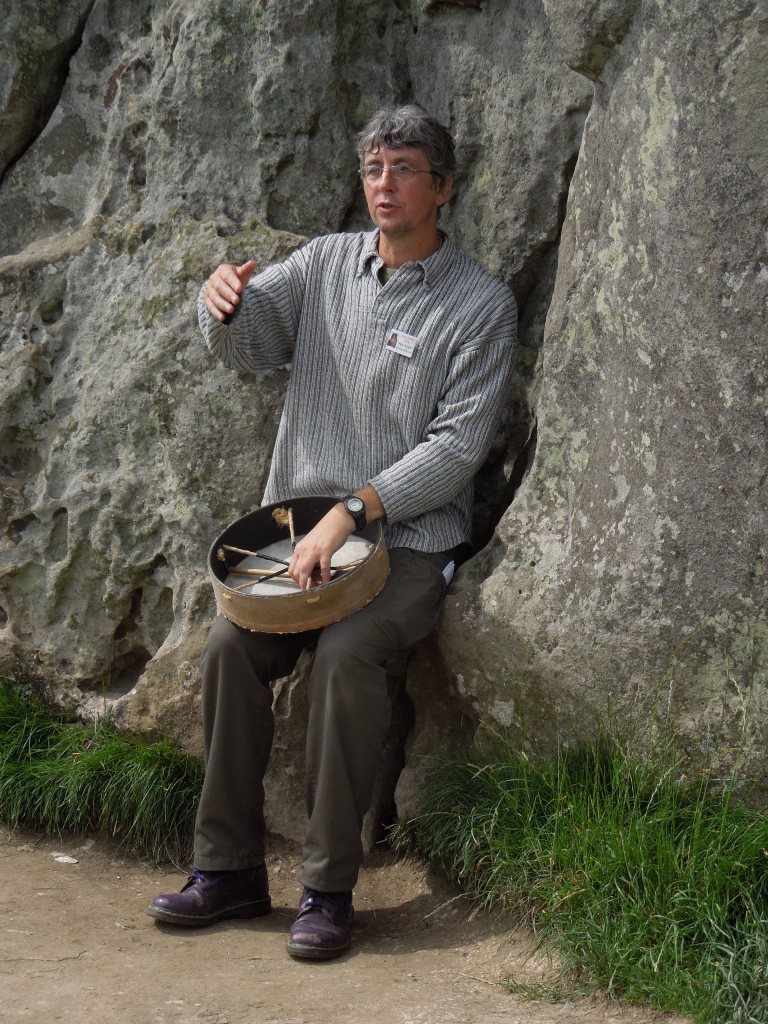
'Stone seeker' Peter Knight, authority on earth mysteries, sits in the Devil's Chair at the Avebury stone circle
Common links
The sacred rocks of Japan derive from their association with the spirit world, and it’s no coincidence that to my mind the most persuasive theory about Avebury is that it was a ritual centre dedicated to ancestor worship.
For the pioneering scholar, Mircea Eliade, standing stones were part of a prehistoric ‘cult of the dead’: ‘in all probablility, these stones constituted a sort of “substitute body”, in which the souls of the dead were incorporated,’ he wrote. In this way the rocks came to represent ancestral spirits, and were consequently a source of power revered by the living descendants.
As we proceeded around the stone circle, seminar leader Peter Knight highlighted some of the characteristics. One was the sequence of ‘male’ phallic rocks alternating with broader, more rotund ‘female’ stones. Did ancient Britons have a yin-yang consciousness? They certainly had a concern with fertility, for the female rocks bear quite definite yoni holes or vaginal clefts. Since the stones were left in their natural state, they had been clearly been carefully selected.
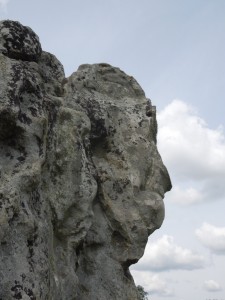
Many of the stones have a startling rock face
Many of the rocks have suggestive shapes, a trait I’ve noticed too in some of the sacred rocks of Japan. The outline of faces, or the shape of a totem animal are particularly notable, as if embodying the spirit of the rocks. These would have loomed large in the moonlit imagination of worshippers during shamanistic rites.
Pagan rites
Neo-paganism and neo-shamanism have made great strides in recent years, with the rising interest making itself evident in various forms. Pagan rites are commonplace, and honoring the spirit of place has returned to the national consciousness.
Healing, meditation, dowsing and drumming comprised the focus of the seminar. At the end we formed a circle around a symbolic centre, mirroring the stone circle within which we had met. Thanks were given to the ancestors for our inheritance, and to Mother Earth for nurturing our existence.
Gratitude; ancestral spirits; nature worship – here indeed were the very elements of Shinto in pagan form. Primal religions the world over share a common outlook, showing how crass are the claims of uniqueness and national divisions. In the rebirth of paganism lies recovery of the ties between east and west, offering hope for convergence and a meeting of the twain. Blessed be!
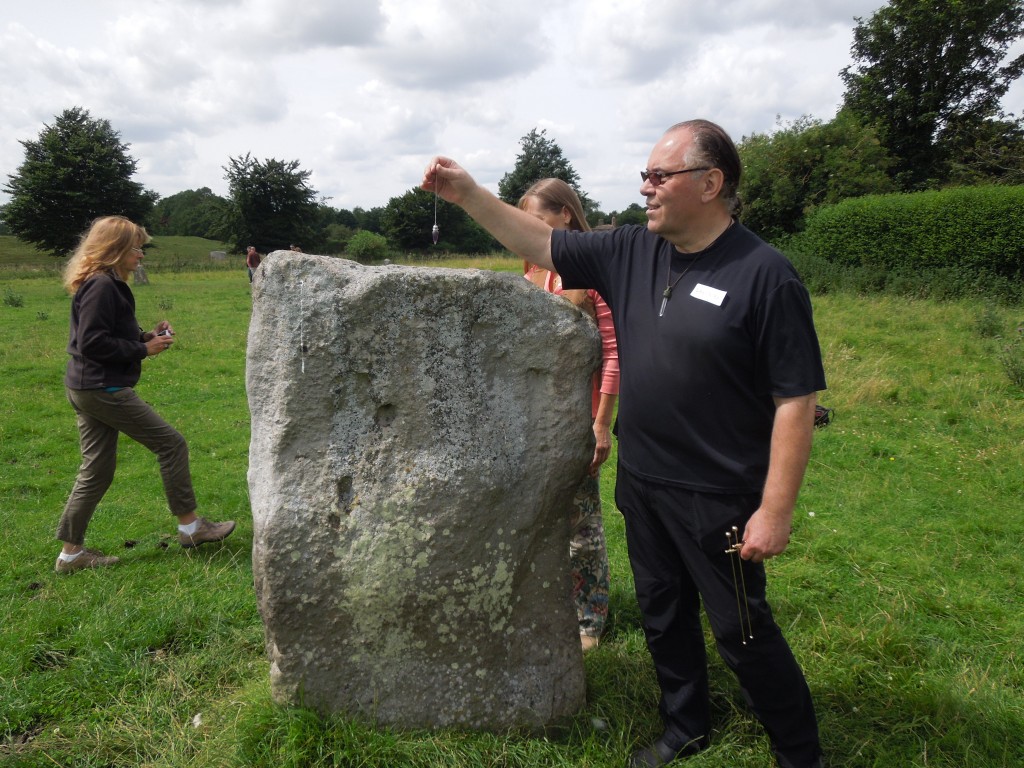
Dowsing for electro-magnetic energy emanating from the rocks
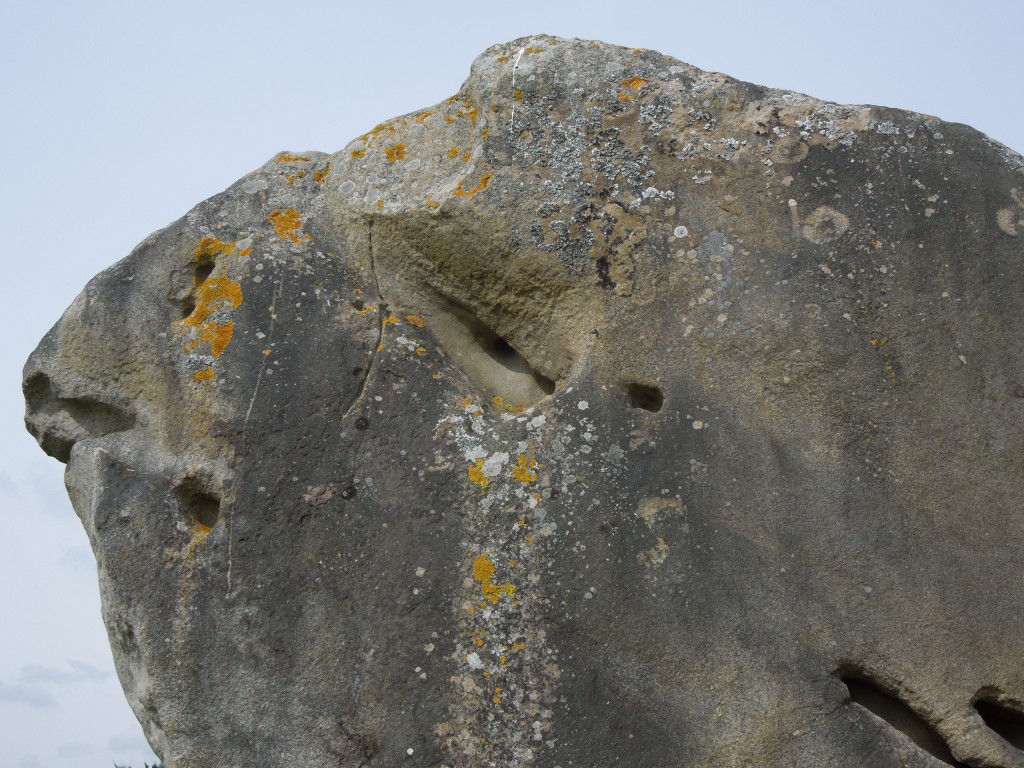
Hawk rock at Avebury – similar to the hawk rock at Shiraishi in the Inland Sea associated with the hawk that guided Jimmu on his eastwardj journey of conquest
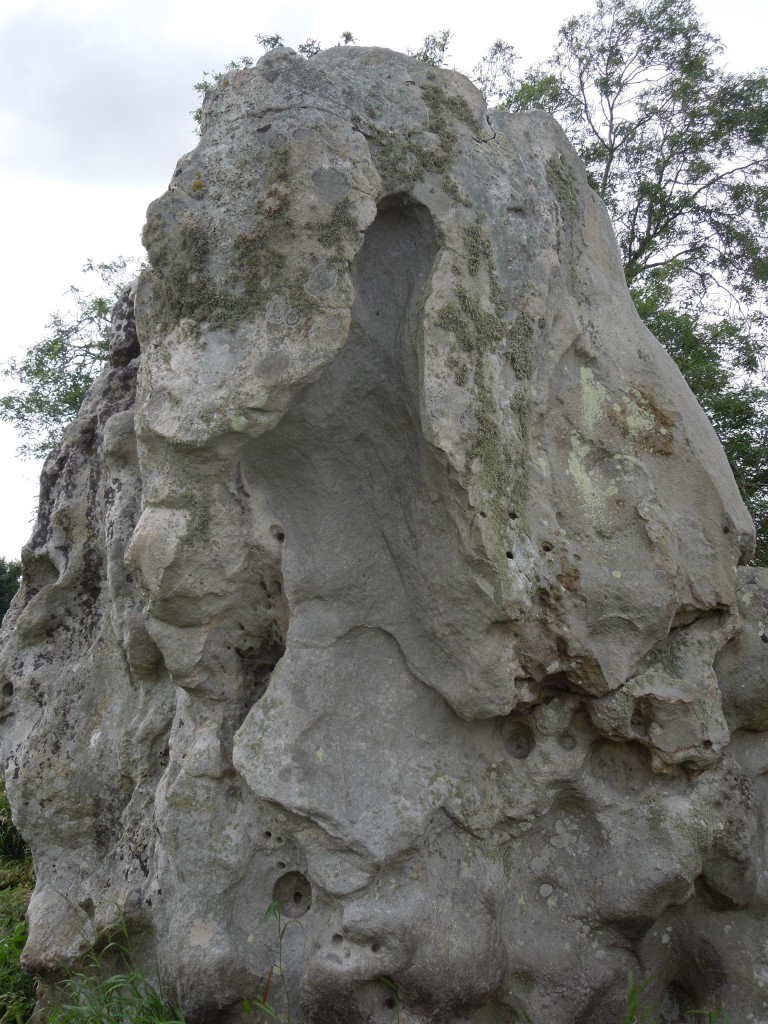
Female rock with vaginal opening - as in Shinto, ancient paganism was concerned with fertility and the natural cycle of birth, death and rebirth
******************************************************************
For more about rocks in Japan, click here.

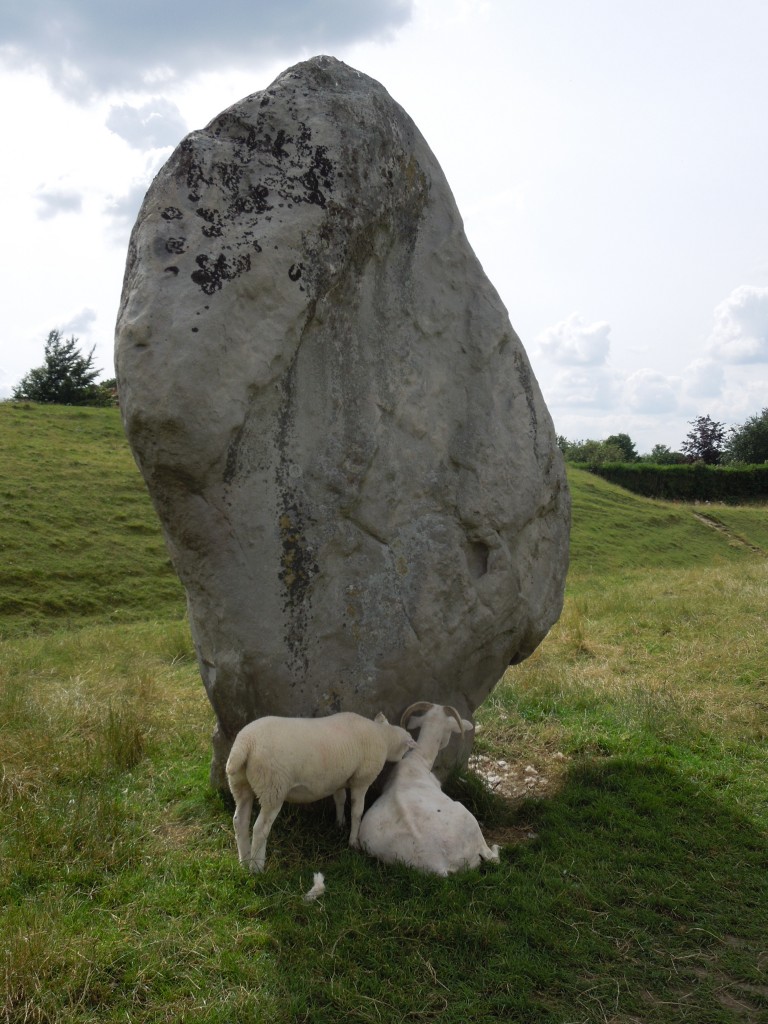
Related to the subject of sacred rocks, Europe also has a number of sacred mountains and mountains that are associated with folklore and mythology. Just to name a few, there are: Mount Athos (Greece), Babia Gora (Poland), Brocken (Germany), Mount Etna (Sicily), Glastonbury Tor (Britain), Kebnekaise (Sweden), Olympus (Greece), Parnassus (Greece), Venusberg (German), and Mount Vesuvius (Italy).
Excellent stuff, Steven, and that’s a very useful list… in fact I was planning a posting on sacred mountains, and you’ve helped give a wider European scope to the subject.